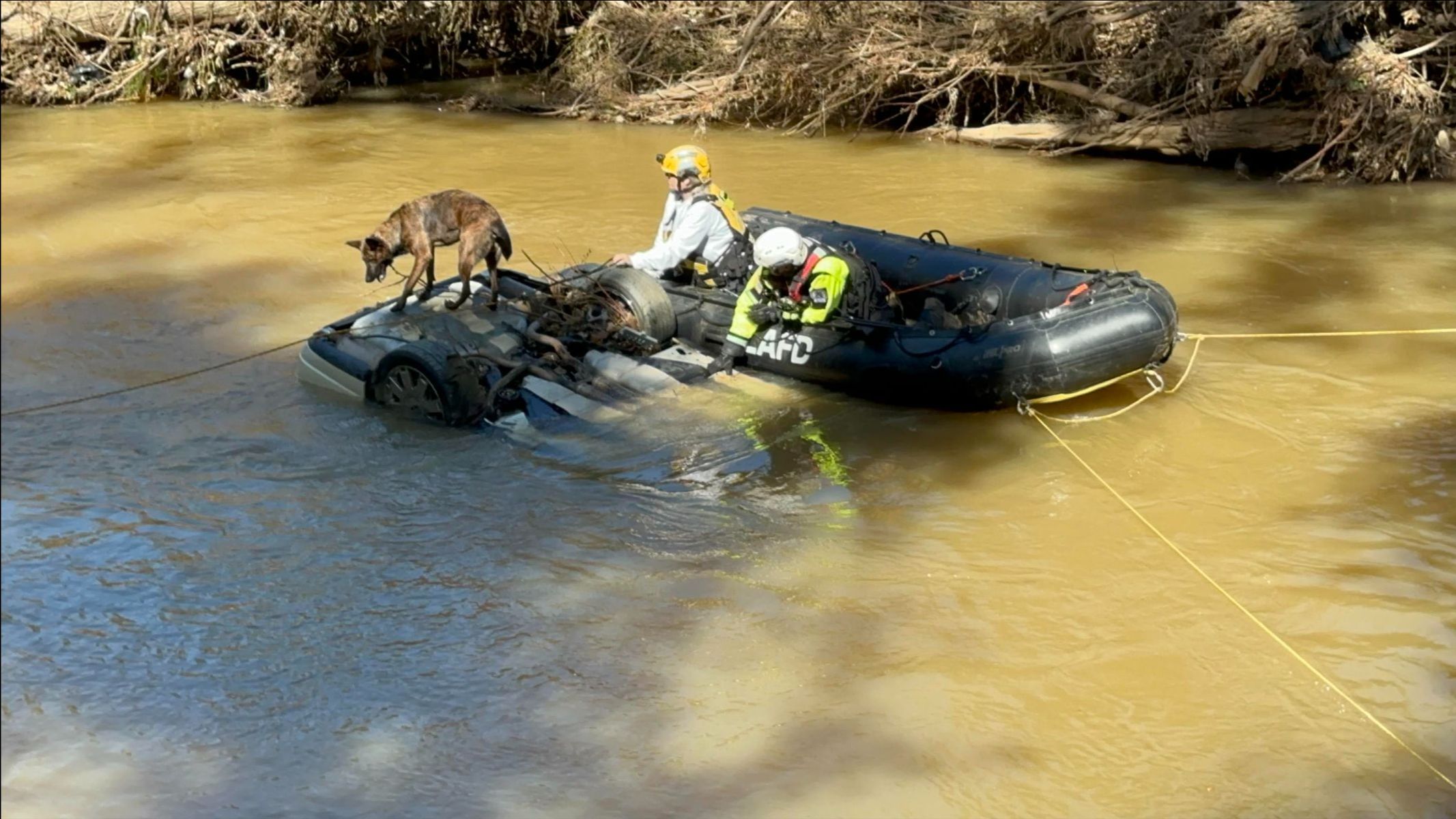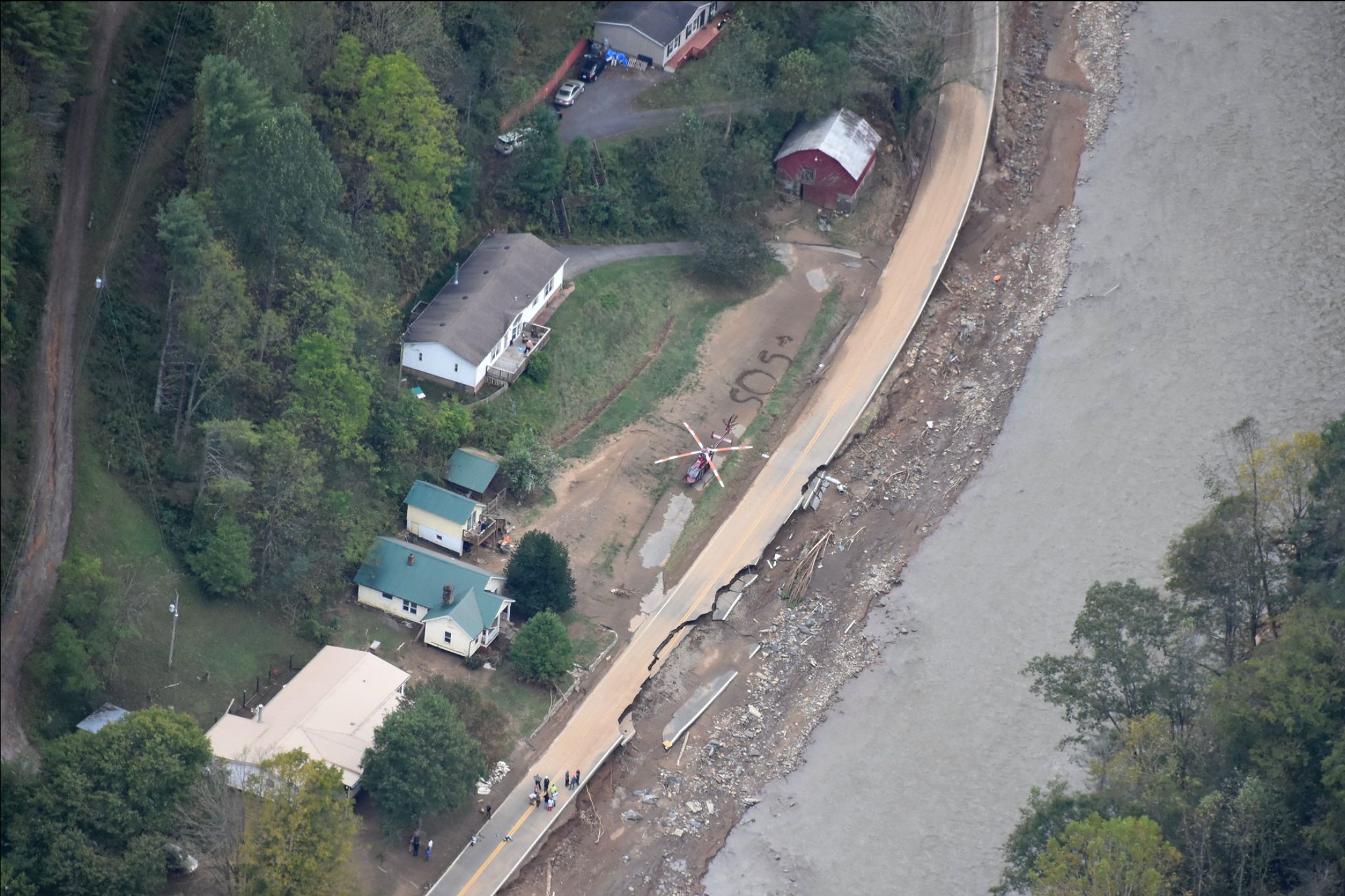Hurricane Helene changed the course of thousands of lives in North Carolina within hours. The human and material cost of the storm could have been avoidable – but only to a certain extent given the unique set of factors that came together to shape the disaster as well as its eventual response.
North Carolina is no stranger to hurricanes – the state has been pummeled by multiple deadly and costly storms since 1916 – and yet, it was caught unprepared for Hurricane Helene which made landfall in Florida on Sept. 26.
Helene left more than 200 people dead across six states, nearly half of those in North Carolina before dissipating over the Appalachian mountains. At least 10 people remain unaccounted for today.
More than a month after the “biblical flooding and devastation,” many have questioned why the state was hit so hard and why locals were unprepared.
“There are several factors that go into play – between the size of the storm itself and the fact that it was preceded by several days of heavy rainfall,” Factal’s North America lead Joe Veyera said. “Ultimately this part of the country was getting months worth of precipitation in just a few days’ time.”
For North Carolinians, Helene has become a temporal mile marker; life before the storm and life after. Described by the state’s climate office as “close to a worst-case scenario,” Helene cost North Carolina an estimated $53 billion in damages after it ravaged more than 126,000 houses, thousands of miles of roads, and hundreds of bridges.
Forecasts were accurate, but a lack of standard preemptive measures meant the public weren’t informed of how bad the situation could be, according to Veyera.
“On the one hand, you had counties that were ultimately impacted by the storm that just chose not to issue evacuation warnings or orders to begin with. And then the secondary problem we learned later on is that for some areas that did decide to issue evacuation orders, there was a gap in time for recipients actually receiving them.”
“You had counties that were ultimately impacted by the storm that just chose not to issue evacuation orders to begin with”
In Buncombe County, home to ill-fated Asheville, local authorities ordered evacuations a day after the landfall, at 6:15 am local time. By the time the alert showed up on phones hours later, residents were digging bodies out of landslide debris.
“There was nothing to evacuate from, the damage was done by that point,” Veyera said. “There were choices that were made by emergency officials to not issue evacuation orders, and then there was the breakdown of communication [systems] itself in some places.”
For Asheville, Helene proved to be near apocalyptic. Geography played a big factor in the utter devastation residents and local officials continue to grapple with.
“Natural beauty ended up being part of Asheville’s problem, with this set of circumstances – you have mountains surrounding the area that funneled water into the valley, washing away towns in the path to the city,” Veyera said. “And every major roadway in and out of the city was damaged or blocked without ingress or egress, which created its own set of problems with getting emergency relief.”
Transportation remains one of the most critical obstacles even as North Carolina made headway by reopening some 600 roads, including 20 miles of the scenic Blue Ridge Parkway.
“I think the biggest challenge with roads is the I-40, which connects western North Carolina and eastern Tennessee,” Veyera said. “It’s going to take months to bring that roadway back to full capacity.”
Potable water is the other main challenge that remains unresolved. Asheville still remains under a boil water notice.
“I don’t think we know exactly how long that’s going to stay for,” Veyera said. “People are flocking to well drilling services because they want a backup, and those services all have months-long waiting lists now.”
“Natural beauty ended up being part of Asheville’s problem – you have mountains surrounding the area that funneled water into the valley, washing away towns in the path to the city.”
Even as rescue workers and locals grappled with life-threatening situations following Helene, the unchecked “persistent and dangerous flow of misinformation” added new dimensions to their risk.
Former President Donald Trump on his campaign trail blasted the Federal Emergency Management Agency (FEMA) for allegedly pausing its emergency response for political reasons.
“[Trump said] that the federal government and North Carolina’s governor, a Democrat, were ’going out of their way to not help people in Republican areas,’” Veyera said. “Trump said FEMA is spending all of its money to help immigrants rather than assist in hurricane recovery efforts which is, we know, outrageously not true. … All of these claims just made it harder for FEMA.”
Authorities arrested at least one person in Rutherford County for threatening to harm FEMA workers who were then briefly dispatched to other locations over safety concerns.
It is too early, however, to document whether such misinformation would play a role in the upcoming elections.
“By the time North Carolina started early voting, all but four of 80 sites initially planned for the 25 western counties that were hardest hit were open and statewide, they saw a record 350,000 plus ballots cast,” according to Veyera. “People looked at voting as a way to hold on to some sense of normalcy in a very difficult time.”
More than six weeks after Hurricane Helene, even as survivors look for stability, entire communities are still grieving. When Asheville officials pivoted from inviting support from a distance to calling tourists back, North Carolinians called the move “tone-deaf,” leaving community leaders in the precarious position of balancing vital business interests against the still very real resource needs of residents.
Written by Halima Mansoor. Edited by Bada Kim.
- Review Factal’s coverage of Hurricane Helene on our topic page (members link)
- Helene dumped enough water to fill the Dallas Cowboys’s stadium 51,000 times over. Read more from experts here
- This piece by Politco analyses North Carolina’s insurance preparedness for Helene and future storms
- Read this list compiled by the National Oceanic and Atmospheric Administration of the costliest tropical cyclones to strike the US

Thanks for reading! If you enjoyed this edition, sign up here to receive The Debrief in your inbox on the first of every month.
Top photo: An “SOS” sign marks the space outside a house and damaged road in the aftermath of Hurricane Helene in Democrat, NC, on Sept. 30. (Flickr/ NCDOT Communications)
Factal gives companies the facts they need in real time to protect people, avoid disruptions and drive automation when the unexpected happens.
Try Factal for free or talk with our sales team (sales@factal.com) for a demo.

